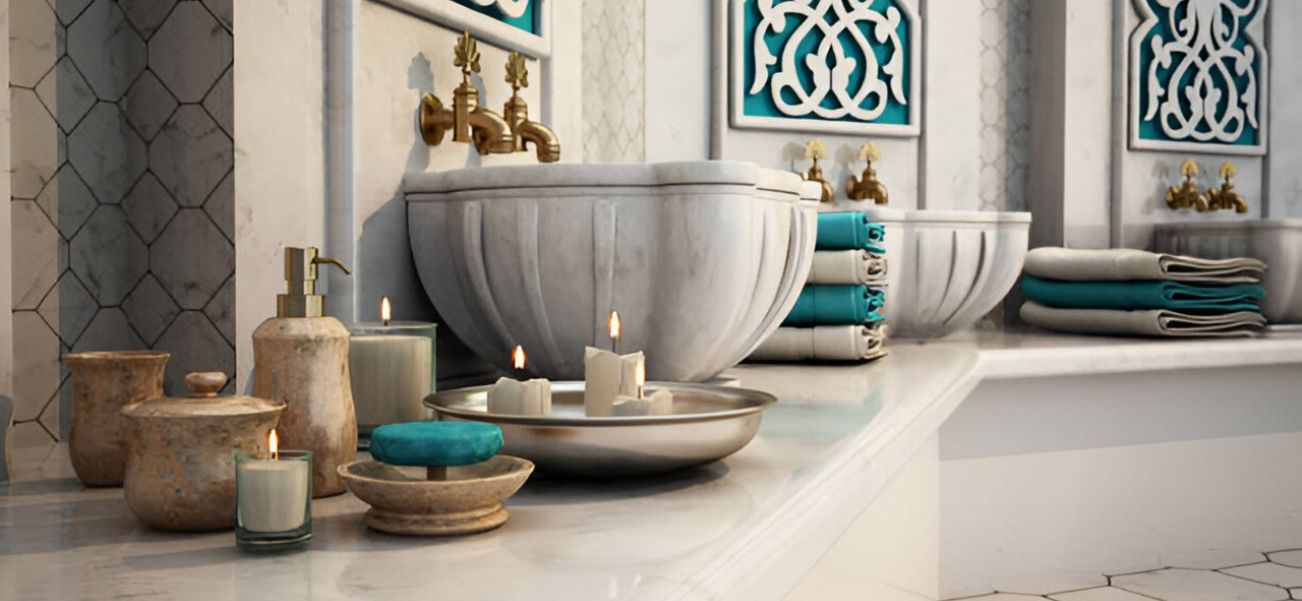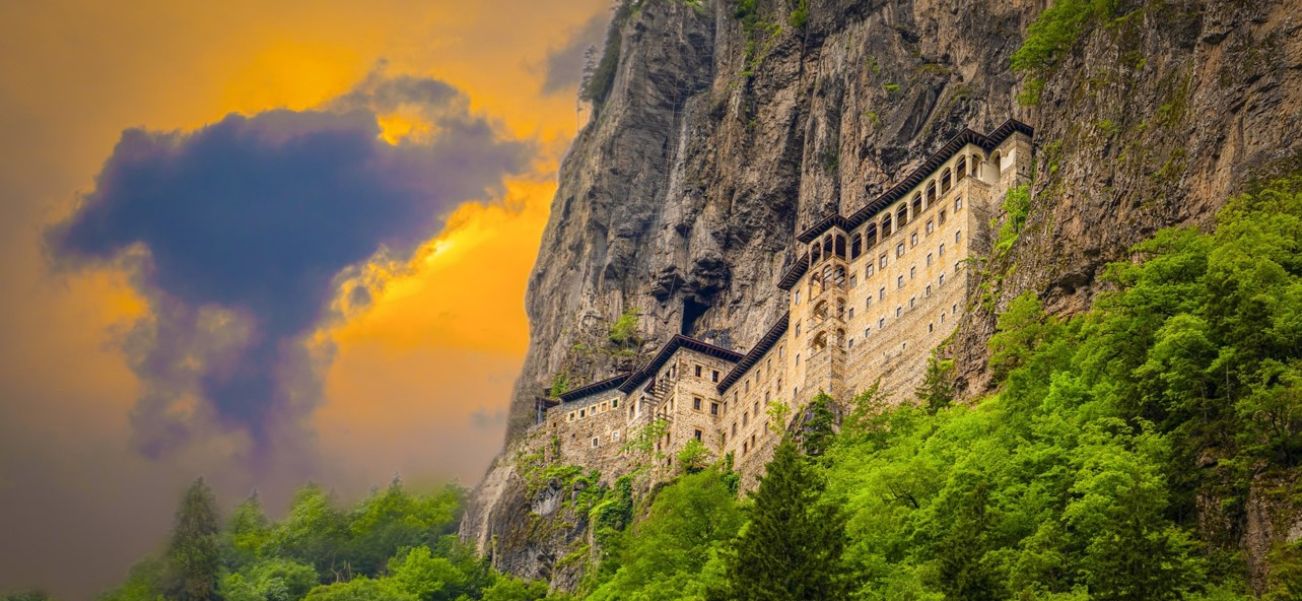
Turkish Bath (Hammam) Explained: History, Atmosphere, Layout & Ritual
Stepping into a Turkish bath, or "hammam", is more than just seeking cleanliness; it is an immersion into a living piece of history, a ritual of wellness that has soothed sultans and commoners for centuries. For any traveler to Istanbul or broader Turkey, a visit to a hammam is an essential, unmissable cultural experience. Historically, the city was a labyrinth of over 200 of these majestic bathhouses, with around 60 still in operation today. They are unique institutions that seamlessly blend profound cultural traditions, deep relaxation, and vibrant social life, offering a captivating glimpse into the soul of the region's heritage.
This comprehensive guide will take you on a journey through the steam, exploring the fascinating evolution of the hammam, from its Roman foundations to its Ottoman pinnacle. We will decode its symbolic architecture, demystify the step-by-step rituals, and illuminate its enduring role as a sanctuary for the body, mind, and community.
The Ultimate Guide to the Turkish Bath (Hammam): A Journey Through History, Architecture, and Ritual
Listen to this podcast about "Turkish Bath (Hammam)":
Turkish Oil Wrestling: A Deep Dive into the 665-Year Legacy of The Glistening Giants
The Living History of the Turkish Hammam: From Roman Thermae to Ottoman Sanctuaries
The story of the hammam is a rich tapestry woven with threads from multiple empires and cultures. It is a narrative of adaptation and refinement, where ancient practices were preserved, enhanced, and imbued with new spiritual and social meaning.
Roman Origins: The Architectural Blueprint (1st–5th Century AD)

The fundamental DNA of the Turkish hammam can be traced directly back to the grand *thermae* of the Roman Empire. These were not merely baths but vast social complexes that were central to Roman civic life. The Romans perfected the concept of communal bathing as a daily ritual, structuring it around a sequence of rooms with varying temperatures: the "frigidarium" (cold room), "tepidarium" (warm room), and "caldarium" (hot room).
Their brilliant engineering marvel, the hypocaust system—a network of pillars and spaces under the floor through which hot air from a furnace would circulate—provided central heating for the baths. This technology, along with the use of marble interiors, steam rooms, and domed ceilings for ventilation, formed the core architectural and functional blueprint that would be inherited and transformed by subsequent civilizations.
Byzantine Refinement: A Legacy of Opulence (6th Century AD)

As the Roman Empire transitioned into the Byzantine era, the tradition of public bathing continued in Constantinople. Byzantine bathhouses became refined versions of their Roman predecessors, often featuring larger structures and even more elaborate architectural designs. They were adorned with intricate mosaics, frescoes, statues, and lavish use of marble, serving as monuments to imperial power and civic pride. The legendary Baths of Zeuxippus, located right next to the Hippodrome in the heart of Constantinople, were the most prominent of these, a place where citizens gathered and which would directly inspire the Turkish bath tradition that followed the city's conquest.
Central Asian and Seljuk Influence: The Cultural Fusion (13th Century)

With the arrival of the Seljuk Turks in Anatolia, a new cultural layer was added. The Seljuks brought with them bathing customs from Central Asia and Persia, which they skillfully fused with the existing Roman and Byzantine traditions. Crucially, they integrated the principles of Islamic hygiene and purification. In Islam, ritual cleansing is a prerequisite for the five daily prayers. The hammam, therefore, evolved to serve a vital religious function, providing a space for this purification of both body and soul. Under Seljuk patronage, public baths became established as essential institutions for both spiritual and physical cleanliness, as well as for community interaction.
The Ottoman Pinnacle: An Imperial Golden Age (15th–16th Centuries)

The hammam reached its architectural and cultural zenith under the Ottoman Empire. Following the conquest of Constantinople by Sultan Mehmed II in 1453, one of his first acts was to commission the construction of the city's first Ottoman hammams in 1454, symbolizing the city's rebirth as a new Islamic capital. Many existing Byzantine baths were also renovated in the Ottoman style.
The reign of Suleiman the Magnificent marked a golden age, largely defined by the genius of his chief architect, Mimar Sinan. A visionary engineer, Sinan drew inspiration from the vast, domed space of the Hagia Sophia and applied his mastery of light, space, and geometry to hammam design. He and his contemporaries built hundreds of grand Turkish baths, transforming them into monuments of Ottoman architecture with soaring domes, luminous interiors, and luxurious marble detailing. During this era, the hammam solidified its role as the heart of social and cultural life.
Decline in Daily Use and European Influence (19th Century)

The 19th century brought modernization and a shift towards Western customs. The spread of private bathrooms with modern plumbing in affluent homes led to a gradual decline in the hammam's role as a daily necessity for the nobility and upper classes. However, they remained immensely popular among the general public and began to attract a new demographic: tourists. This period also saw the incorporation of European architectural elements, notably the Baroque and Rococo styles, into newer bathhouses like the magnificent Cağaloğlu Hammam, blending Ottoman grandeur with ornate Western decoration.
Modern Resurgence: Heritage and Wellness Tourism (1980s to Today)

By the late 20th century, many of Istanbul's historic hammams had fallen into disrepair. However, a surge in global tourism and a renewed appreciation for ancient wellness practices sparked a dramatic revival. Many iconic hammams underwent meticulous, multi-million-dollar restorations to reclaim their former glory.
Today, they are sought-after destinations not just for hygiene, but for an authentic cultural experience, a historical journey, and the recognized therapeutic benefits of their ancient rituals—offering stress relief, skin revitalization, and deep muscular relaxation to visitors from around the world.
The Golden Age: The Hammam in Ottoman Society
During the Ottoman era, the hammam was far more than a bathhouse; it was a microcosm of society, a pillar of community life, and a sanctuary with layered significance.

Ancient Wellness and Spiritual Purification
The Ottoman bathing ritual was a holistic wellness treatment long before the term became trendy. The sequence of steaming, vigorous massage, and exfoliation was designed to boost circulation, ease muscle tension, cleanse the skin, and induce a state of deep mental relaxation. This addressed the well-being of the body, mind, and spirit in one comprehensive experience. Rooted in Islamic traditions, this physical cleansing was intrinsically linked to spiritual purity.
The ritual ablutions performed in the hammam were a preparation for prayer, making the bathhouse a place of both physical and metaphysical renewal. This spiritual connection is why many grand hammams, like the Süleymaniye Hammam, were built as part of larger mosque complexes ("külliyes"), directly linking worship with wellness.
A Vital Social Sphere for Women
In the highly structured Ottoman society, the hammam provided one of the few public spaces where women could gather freely and socialize outside the home. With gender-specific sections or separate bathing hours, the women's hammam became a sanctuary of female solidarity. Here, women could bathe, relax, and converse without the constraints of male presence.
It was a place to exchange news, discuss family matters, form friendships, and even showcase fine towels, bath clogs ("nalın"), and intricate embroidery. The hammam was central to a woman's social life and was a rare domain where she could exercise significant social autonomy.
The Communal and Cultural Nexus
For men, the hammam was a vibrant social and business hub. It was a great social equalizer, where people from different walks of life—from viziers to merchants to artisans—would mingle. Beyond casual conversation, games, and storytelling, the hammam was a venue for conducting serious affairs.
Business deals were struck, political matters were debated, and crucially, marriage negotiations were often initiated. Mothers would visit hammams to scout for suitable brides for their sons, observing young women's health, character, and social graces. The hammam was also a venue for celebration, hosting elaborate parties for circumcisions, births, and pre-wedding rituals known as "hamam nights," which remain a popular tradition in Türkiye today.
The Architecture of Serenity: Decoding the Hammam's Design
The architecture of the Turkish hammam is a masterpiece of form and function, a harmonious space designed to facilitate a specific ritual while inspiring awe and tranquility. It represents a sublime synthesis of its historical influences.
The Sequential Layout: A Journey of Heat and Coolness
A traditional Ottoman-era hammam is designed as a sequence of rooms, each with a distinct temperature and purpose, guiding the bather through a carefully orchestrated thermal journey.
1. THE ENTRANCE HALL (camekan)

This is the first and coolest section, serving as the welcoming heart of the hammam's social space. It typically features a central fountain, private changing cubicles ("halvet"), and a seating area where guests can relax before and after the bath, often while enjoying a cup of Turkish tea. The "camekan" sets the tone with its often ornate decoration and tranquil atmosphere.
2. THE WARM ROOM (SICAKLIK)

After leaving the "camekan", you move through an intermediate door into the "sıcaklık". This room acclimatizes your body to the rising heat and humidity. Lined with individual marble basins ("kurna") fed by hot and cold water taps, this is where the bather begins the washing process, soaking and preparing the skin for the treatments to come.
3. THE HOT ROOM (HARARET)

This is the central and most iconic chamber of the hammam, crowned by a large, often spectacularly domed ceiling. The defining feature is the large, raised marble platform known as the "göbek taşı" (navel stone). Heated from below by the hypocaust system, this is where bathers lie down to sweat out impurities, soften their skin, and receive a full-body scrub ("kese") and soap massage from an attendant ("tellak"). The "hararet" is the core of the cleansing ritual.
4. THE COOL ROOM (SOĞUKLUK)

After the intense heat and vigorous treatment, the bather retreats to the "soğukluk", a cool, quiet room that allows the body to gradually return to its normal temperature. Here, wrapped in dry towels, you lie down to rest, rehydrate, and let the profound sense of relaxation wash over you. In many modern hammams, this function is often integrated into the "camekan".
Defining Architectural Features
- The Domed Ceiling The dome is not merely an aesthetic choice; it is a critical functional element. Its shape allows hot air and steam to rise and circulate efficiently, preventing condensation from dripping directly down on bathers. The small, star-shaped or round glass oculi embedded in the dome serve as natural skylights, creating a mesmerizing play of light and shadow and acting as vents for excess steam.
- The "Göbek Taşı" (Naval Stone) This large, heated marble platform in the center of the "hararet" is the ritual and architectural heart of the hammam. It functions as a giant heating pad, warming bathers from below as they recline.
- Marble Basins and Water Channels The rows of marble basins ("kurna") along the walls are for the washing ritual. Historically, sophisticated channels and fountains ensured a continuous and efficient flow of water, a testament to advanced Ottoman engineering.
- The Hypocaust System The Roman underfloor heating system was adopted and perfected by the Ottomans. A wood-fired furnace ("külhan") located in a service area would heat air, which was then channeled through pillars and spaces under the marble floors of the "sıcaklık" and "hararet", and through clay pipes embedded in the walls, creating a consistent, radiant heat.
A Symphony of Architectural Styles
The Turkish hammam is a living museum of architectural history.
- Ottoman Design Showcased through grand central domes, high ceilings, and expansive, symmetrical layouts that balance awe-inspiring space with intimate functionality.
- Islamic Aesthetics Evident in the emphasis on geometric harmony, symmetry, and the use of Iznik tiles with floral motifs and calligraphic inscriptions in later or renovated hammams.
- Byzantine Heritage The fundamental layout of a central domed space surrounded by smaller rooms is a direct inheritance, as is the structural use of arches and vaults.
- Central Asian Influence Elements like the central "göbek taşı" were incorporated from Central Asian bathhouse traditions.
- Baroque Influence In the 18th century, hammams like Cağaloğlu began to feature the ornate, curved lines, shell motifs, and elaborate decorations characteristic of the European Baroque movement.
The Hammam Ritual Demystified: A Step-by-Step Guide for the First-Timer
Understanding the ritual can ease any anxiety and allow you to fully embrace the experience. Here is what to expect during a traditional self-service or attendant-assisted bath:
- Arrival and Preparation ("Camekan") You will be assigned a private cubicle to undress. You will be given a "peştemal" (a traditional checked cotton wrap) to wear around your waist (for men) or chest (for women), and a pair of wooden clogs ("nalın"). Secure your belongings and proceed to the warm room.
- Acclimatization ("Sıcaklık") Find an available marble basin ("kurna"). Using the provided bowl ("tas"), douse yourself with warm water from the taps. Sit and relax on the marble seating, allowing your body to adjust to the heat and your pores to open.
- Sweating and Scrubbing ("Hararet") Move into the hot room and find a spot on the great heated "göbek taşı". Lie down and relax for 10-20 minutes, allowing yourself to sweat profusely. This process detoxifies and softens the skin. If you have opted for a treatment, an attendant ("tellak" for men, "natır" for women) will summon you. They will first exfoliate your entire body with a coarse kese glove, removing layers of dead skin. This is both invigorating and remarkably effective.
- The Soap Massage Following the scrub, the attendant will douse you with warm water. Then, using a large soap-filled cloth pouch, they will create a mountain of rich, fragrant lather, covering your entire body. This is followed by a vigorous, rhythmic full-body massage that works out deep-seated tension and knots. You will then be rinsed with bowls of warm water.
- Cooling Down and Rest ("Soğukluk/Camekan") After your final rinse, you will be guided back to the cool room or your cubicle in the "camekan". Wrap yourself in dry towels and lie down on a couch to rest, sip a drink, and allow your body temperature to normalize and the deep sense of calm to settle in. This period of rest is a crucial part of the ritual.
The Master Architects: Visionaries of Stone and Steam
The grandeur of the Ottoman hammam is owed to the genius of its architects.
- Mimar Sinan (c. 1488–1588) The undisputed master of Ottoman architecture, Sinan was a visionary who revolutionized the use of space and light. Serving as chief court architect for 50 years, he designed iconic structures like the Süleymaniye Mosque and the Selimiye Mosque. His expertise extended to hammams, where he applied his engineering prowess to create spaces of perfect harmony and grandeur. Masterpieces like the Haseki Hürrem Sultan Hammam (built for Roxelana, Suleiman's wife) and the Çemberlitaş Hammam stand as testaments to his brilliance, featuring vast domes and ingeniously designed heating and lighting systems.
- Mimar Hayruddin (16th Century) A student and close colleague of Mimar Sinan, Hayruddin was a renowned architect in his own right and a key figure in establishing the classical Ottoman style. He contributed to the construction of the Süleymaniye complex and is credited with building the Şehzade Hammam, showcasing the high standards of the era's architectural guild.
- Süleyman Ağa (18th Century) As court architect to Sultan Mahmud I, Süleyman Ağa represents the next evolution in hammam design. His most famous work, the Cağaloğlu Hammam (1741), is a magnificent example of the transition from pure Ottoman classicism to a more ornate style, beautifully incorporating Baroque influences into the traditional hammam layout, making it one of Istanbul's most visually stunning and photographed baths.
Conclusion: More Than a Bath, A Cultural Immersion
The Turkish hammam is a profound cultural institution that has weathered the centuries, adapting while holding true to its core purpose: the holistic purification of the body and the strengthening of the community. It is a architectural marvel, a historical landmark, and a living ritual all in one.
To visit a hammam is to participate in a tradition that has comforted, cleansed, and connected people for millennia. It is an invitation to slow down, to surrender to the heat, and to emerge not just cleaner, but truly renewed—carrying with you the timeless serenity of the bath.













